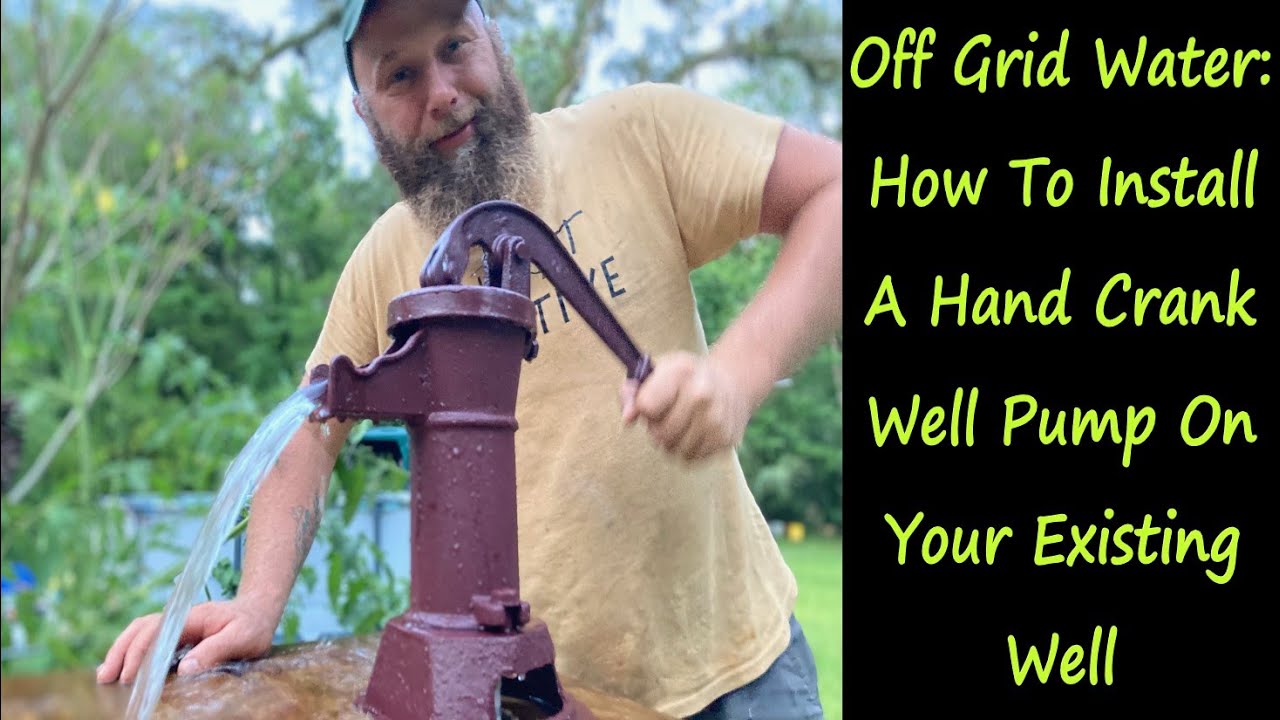Alright, let’s talk about this whole hand pump thing on your well. You know, the thing you crank to get water? Yeah, that one. I ain’t no expert, but I’ve seen a thing or two in my time. So, here is how you get that pump working on that hole in the ground you call a well.
First thing you gotta know, this ain’t rocket science. It’s just a pump. It’s supposed to be simple, like churning butter, but sometimes it gets messy. You got this existing well, right? Good. That’s a start. We ain’t digging no new holes today.
Now, you probably got some kind of cover on that well. Maybe it’s one of them fancy ones, maybe it’s just an old board. Whatever it is, you gotta get it off. Just pry it loose. If you can lift it with your own two hands, then good, just do it. If it’s too heavy, get some help. No need to break your back over this, you’ll need that back to install the hand pump.

They say it only takes a couple of hours. Two hours, they say! Ha! Maybe if you’re some young buck with all your teeth and no arthritis. For the rest of us, it might take a bit longer. Don’t you rush it. You do it right, or you’ll be doing it again. It is not very difficult, but you just need to be patient.
You got different kinds of these pumps, you know? Some are for shallow wells, some are for deep ones. You gotta make sure you got the right one. If you are not sure, then you better ask someone who knows the difference between shallow and deep. Otherwise, you will have to return it and waste a lot of your time. You don’t want to put a little pump on a deep well. It ain’t gonna reach the water. And if you got a shallow well, you don’t need some giant pump either. It’s like wearing shoes that are too big or too small. Just ain’t right.
Then you got pipes. Oh, the pipes! Make sure you got the right size pipes. Too big, too small, it won’t work right. They gotta fit just so. And the couplers, those little things that connect the pipes, they gotta be the right ones, too. Don’t just use any old thing you find lying around. Use the good kind. You don’t want leaks, do you? It is like you are having a bleeding and no one is taking care of that. So, you make sure these pipes are good.
- Get the right pump.
- Get the right pipes.
- Get the right couplers.
I heard some folks talking about putting this hand pump right next to one of them electric pumps. Like having a horse and a car in the same barn. Sounds strange to me, but I guess it works. That way, when the power goes out, you still got water. Just like how you still have water when it is raining. This is a good idea. You never know when you will need the hand pump, so it is good to have one. They say most folks can do it themselves, putting in the pump. But if you’re scared of messing it up, you can always call one of those fancy pump people. They’ll charge you an arm and a leg, though. It will cost you somewhere between 50 bucks to 2,000 bucks. They always do.
These pumps, they ain’t perfect. They need fixing sometimes. Just like an old tractor, you gotta grease it up and tighten the bolts every now and then. So, you make sure you know how to take care of it before you install it. Otherwise, you will be calling the pump guy very often. You don’t want to be doing that all the time, right? And, if you are using the hand pump, you gotta pump it. It is not going to work by itself. I know this is very obvious, but you will be surprised at how many people forget to do it.
So, there you have it. That’s how you put a hand pump on your well. It ain’t easy, but it ain’t impossible either. Just remember what I told you: get the right parts, take your time, and don’t be afraid to ask for help. And for heaven’s sake, don’t break your back! You just need to find the right way to do it. There are a lot of tutorials online. Then, you’ll be pumping water like a pro in no time. And remember, if I can understand it, you can too!
Oh, and one more thing. Don’t go drinking that well water straight away. Might be full of critters. Boil it first, just to be safe. You do not want to get sick just because you are too lazy to boil the water. Safety first, always.















